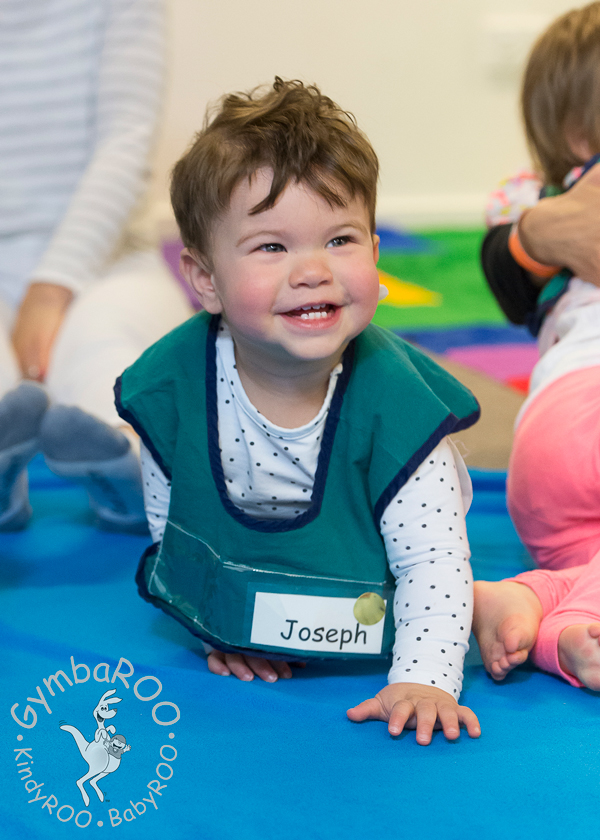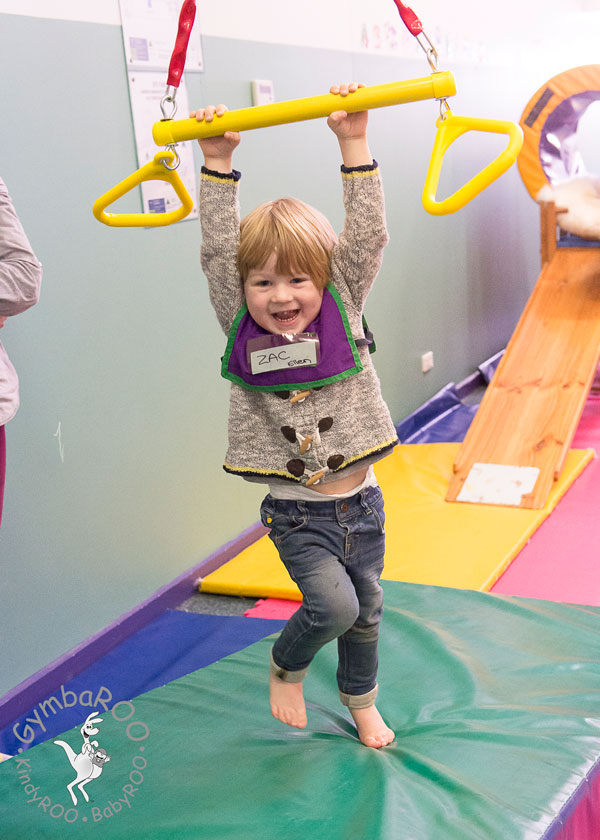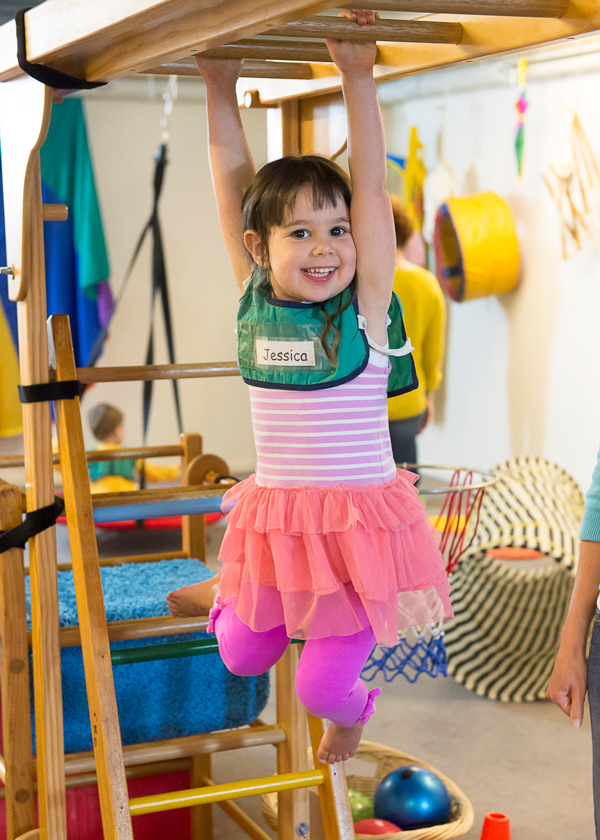Join the thousands of parents already raising smarter, happier babies with our online baby classes: The Active Babies Smart Kids series. Click here.
GymbaROO-KindyROO kids are excelling academically, emotionally, in leadership roles and on the sporting field. Find us at: GymbaROO-KindyROO
Joanne Looney and Bindy Cummings
As the saying goes: ‘It takes a whole village to raise a child,’ – well it also takes a ‘whole body’ to raise a hand-writer!
Handwriting is ultimately a fine motor skill – however, have you ever stopped to think about how this skill develops over the first five years of your child’s life? The human body is genetically programmed to develop from the centre of the body – big muscles – to the outer parts of the body, dominated by the small muscles. Proficiency at any fine motor (small muscle) task, depends firstly on the development of the associated gross motor, (bigger muscles).
Handwriting is one such skill. Learning to write actually begins in infancy. If the big muscles do not get adequate stimulation and development, then there is a flow on effect to the small muscles in the hands and so writing, or any task requiring manual dexterity, can be affected.
How the writing story begins
Our little non-mobile babies begin their journey towards being proficient hand-writers in their earliest months as they gain control over primitive reflexes such as the grasp reflex and asymmetrical tonic neck reflex. Whilst on their tummies, they begin to prop themselves up, resting first on their elbows and then on their wrists and hands – the very beginnings of preparation for handwriting!
The gross motor skills of commando crawling and creeping on all fours continue to develop muscle tone and strength in the hands, arms, shoulders, neck and back – vital for later fine motor skill development. During this time, fingers are constantly practicing fine motor movements as they pick up pieces of fluff and all manner of small objects off the floor. Your mobile babies are continually building towards being proficient hand-writers as they pull themselves up to standing and cruise around the coffee table, using their hands to hold, balance themselves, slap the table etc. If you think about it, there is no other time in life that arms and hands get such a good, consistent workout, as in this first year. Find more about why crawling and creeping matter, here.
Young walkers need their arms for balance during the early stages of moving in the upright position, however with practice, the arms are soon free to push, pull and carry objects around, again working on their upper body strength – the gross motor component of handwriting.
Around 18-24 months your toddlers will develop a fascination with hanging and swinging from any bar they can find – now the real hard work begins in fine tuning those manual dexterity skills. This is one of the reasons you will find so many hanging and swinging opportunities throughout your BabyROO, GymbaROO and KindyROO classes.
It is important when looking for opportunities for young children to swing and hang, that the bar or rings are small enough in diameter that children can comfortably wrap their fingers over the top of the bar with their thumb in opposition placed under the bar. The development of this cortical grip will help to ensure that the correct mature pencil grip will develop over time.
With practice and maturity our young trapeze artists will also become competent on the overhead ladder (monkey bars) and eventually learn to successfully move from one side to the other, not only working on gross motor abilities and strengthening but also developing hand-eye coordination (the eyes will follow the hands when moving from rung to rung), motor planning (moving and thinking), timing, rhythm, posture and balance.
It is important to point out here, that while muscle development and upper body strengthening are vital components necessary for proficient handwriting, there are other areas of skill development that are also needed by our young hand-writers. Handwriting ultimately involves adequate development of body awareness, posture, balance, visual skills, the ability to visualise, auditory skills, sensory integration, laterality development, rhythm and temporal awareness. Phew! The great news is, that much of this skill development will happen naturally if babies and children go through the normal developmental sequence of movements and are given plenty of opportunity to practice, repeat and refine these movements within each stage of development.
What you can do to lay great foundations for successful handwriting
- Continue with your GymbaROO / KindyROO / BabyROO activities at home each day.
- Provide your young babies with loads of tummy time opportunities which will naturally lead onto your baby learning to creep and crawl. Tummy time ideas, activities and games in our extremely popular free video here.
- Do not hurry your little ones to be upright. Let your babies stand and walk in their own time. The longer they crawl and creep the better! Access our video on crawling and creeping here.
- Once walking, create opportunities and encourage your little ones to get back down onto all fours and crawl around. Build really simple obstacle courses using your dining room chairs, coffee tables (cover with sheets to create tunnels), cardboard box tunnels etc.
- Play animal games – being tigers and chasing each other’s tails is always great fun for all ages! For older children you can try to be an elephant and use one arm as a trunk – balancing on just one arm is very tricky! Remember to swap arms the next time you stop and swing your trunk!
- Play ‘wheelbarrow races’ with a friend and games like ‘Tug-of-War’ and ‘Row, Row your Boat’.
- Once your child is old enough, make sure you use the trapezes and the overhead monkey bars each lesson at GymbaROO / KindyROO. Visit your local park as they often have monkey bars to swing from. You can introduce your young child to these by simply placing their hands over the bar, holding them tightly around the hip area and gently swinging them back and forward.
- Provide a trapeze bar at home for your little one to practice on. Hang this in a safe but very accessible place. I’ve seen many a trapeze hung inside houses and used frequently throughout the day. You can make a trapeze yourself, (click here) or purchase one from your local toy store.
Joanne Looney is the Master GymbaROO Franchisor in New Zealand.
GymbaROO Images by Studio Z Photography
Active Babies Smart Kids – Online Baby Classes
GymbaROO-KindyROO’s online series of baby classes is taking the parenting world by storm! It is highly recommended by doctors, paediatricians, early childhood experts and the Maternal Child and Family Health Nurses Association. This series is being called: “The essential guide for parents”. Join the thousands of parents already playing with their babies from birth, in the best way for brain and body development and laying crucial foundations for future learning. What happens in the first year, not only matters, it matters a lot! Introductory video below.
Click here: Active Babies Smart Kids online series of baby classes
Try the first episode FREE: Tummy time + baby fun and development class 1
GymbaROO-KindyROO
Thousands of parents, babies and children are presently involved in our programs and creating rising stars. GymbaROO-KindyROO kids are excelling academically, emotionally, in leadership roles and on the sporting field. Come join all the fun and learning! “GymbaROO – The best decision I ever made for my child.” Classes from 6 weeks old – 7 years GymbaROO KindyROO
Enjoy the following GymbaROO-KindyROO articles
GymbaROO-KindyROO: Who, what, where, why and how
All about GymbaROO-KindyROO’s online baby classes for parents and babies: Active Babies Smart Kids
How to raise a smarter, happier baby
Why active babies make smart kids
Tummy time for baby’s healthy development.
When will my baby / toddler become right or left handed?
Please do not sit me until I can do it myself.
Why creeping and crawling matter.
Recent research demonstrates the importance of early movement experiences to academic achievement.
Choosing childcare that fosters neuro-development, quality play and rich learning environments.
Why every young child needs a trapeze and how to make one.
Click here for more GymbaROO-KindyROO article choices





